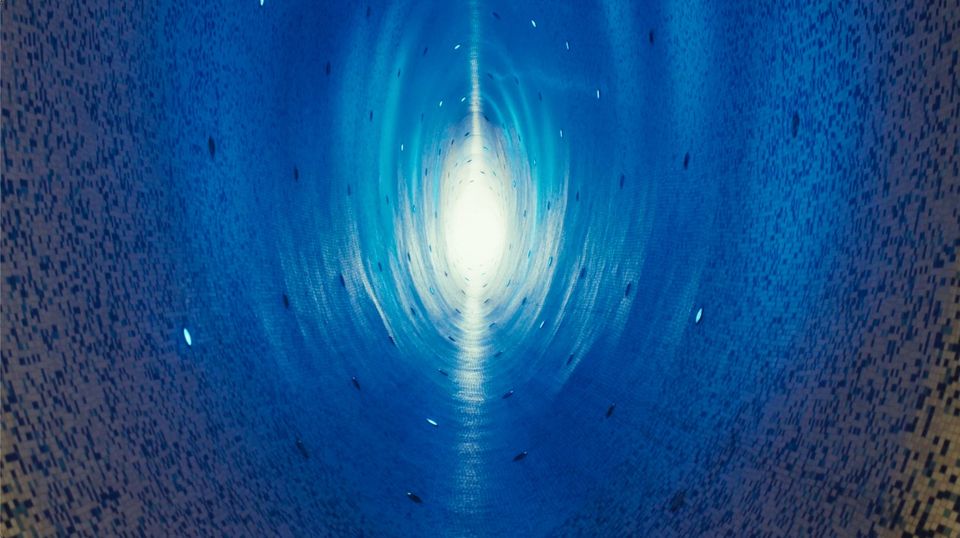

















Napoli, Italia
Giovanni Fassanaro
AIA
William Kentridge, Bob Wilson, Achille Cevoli
I owe my intervention in one of the main stations of the new Metropolitana di Napoli to the strong recommendation of Alessandro Mendini. Napoli, which had decided to have the most beautiful metro in the world, was commissioning each station to a renowned architect: Gae Aulenti, Dominique Perrault, Siza Vieira, Richard Rogers… and Mendini himself, who initiated the experience and held significant prestige in the Metropolitana.
The leitmotiv of the project emerged when I visited the construction that had just begun, which allowed me to introduce significant structural changes. The 40-meter-deep well, over which a crane that extracted all the tuff from the tunnel excavation was located, was of Piranesian grandeur. When the crane finished its job, the plan was to fill in this cavern, but I suggested not closing it completely. Preserving a crater seemed like an attractive idea. It would be magical if travelers could see the depth at which they were and glimpse the sunlight up there. And if from the square, passers-by could look down into the well and see the passengers down there, it would be vertiginous.
Another key idea arose from the fact that much of the station lies below sea level. The part above ground zero appears to be dug into the rock, while the lower part seems submerged in the sea. The floor and walls of the upper part are covered in stone, and the appearance of an archaeological Aragonese wall enhanced the image of an excavation. The spaces below sea level are covered in blue glass mosaic. Above, everything is earthy and matte; below, everything is blue, vibrant, and shiny.
The works of two artists I had the pleasure of working with increase this dichotomy. In the "excavated" zone, William Kentridge executed murals in rough, archaic stone mosaic. In the "aquatic" zone, Bob Wilson (an artist invited at my insistence) installed two long, facing views of the seashore, subtly moving as one walks through the gallery. Wilson also created a program that coordinates the color and intensity of each LED in the crater over time. This way, every morning, when I go to work or school, I see a different crater.
Natural light also penetrates the mezzanino through three skylights, which allow a glimpse of the Aragonese wall and Kentridge's mural from the street.
In addition to the underground section, we designed the end of Via Díaz, transformed into a large pedestrian square; a breath of fresh air for the crowded Via Toledo.
In the small area that remains unexcavated, trees were planted, while on the southern perimeter a series of "umbrellas" were grouped to protect the street vendors –who had previously been scattered arbitrarily and illegally across the sidewalks. In the space near Via Toledo, we placed an equestrian sculpture, also by Kentridge.
"The most impressive metro station in Europe" – Daily Telegraph. Extended article in Corriere della Sera
Photographs by Andrea Resmini for Bisazza, Giovanni Fassanaro, and courtesy of Metropolitana di Napoli. Vídeo by ©Hic&Nunc Filmworks